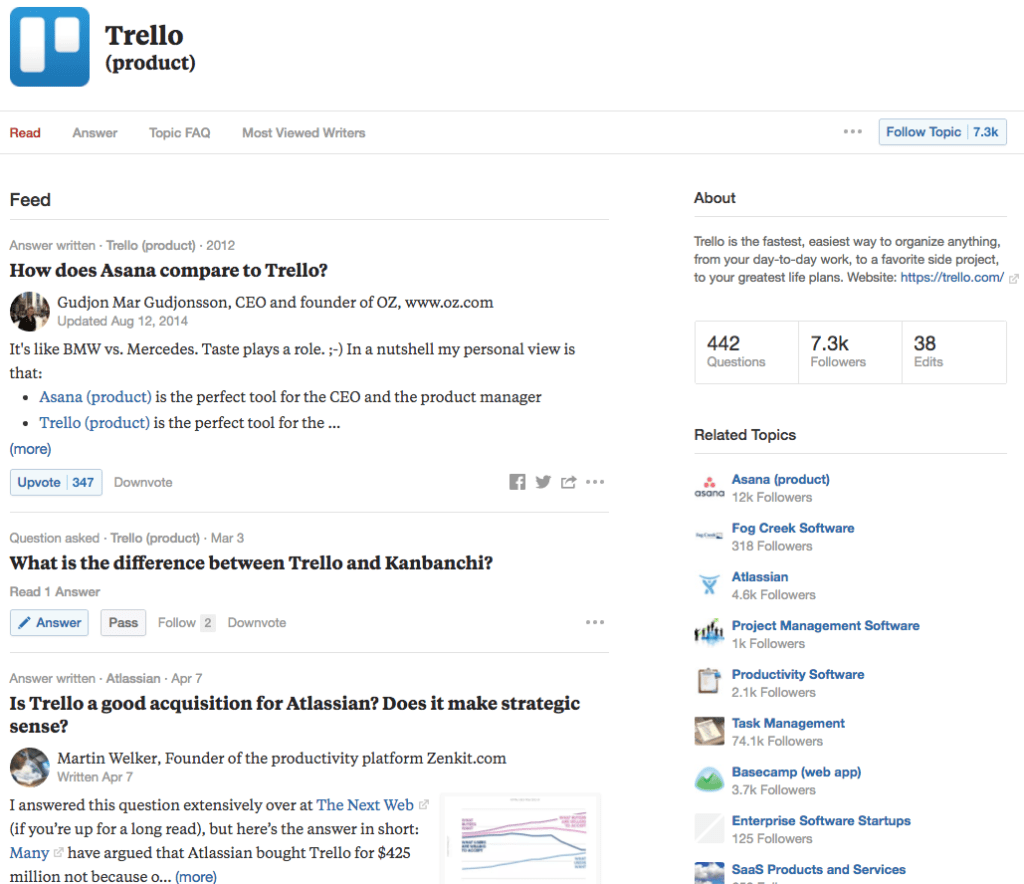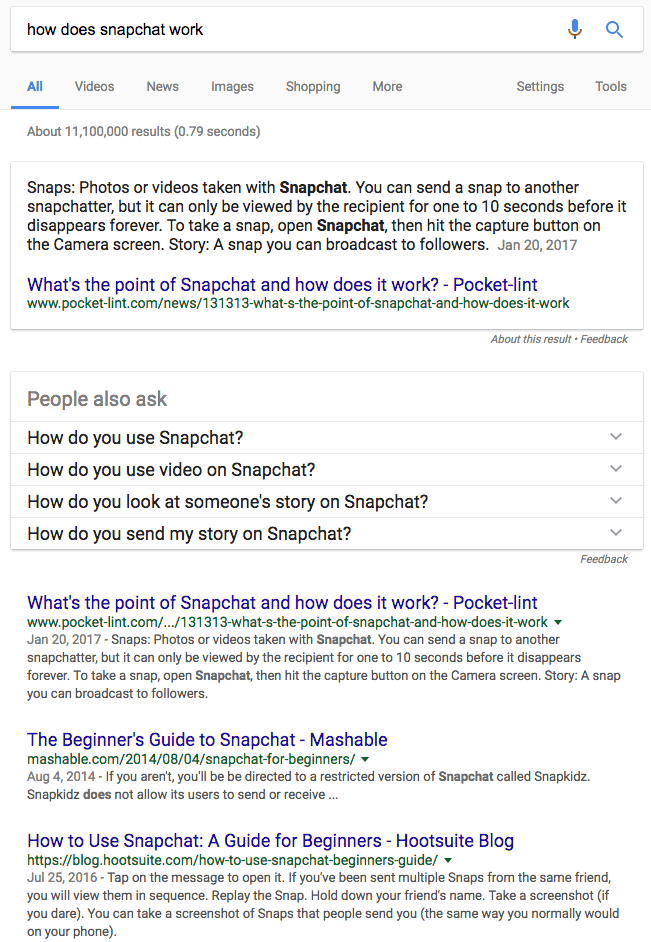Achieving Product-market Fit is the single most important goal of every startup. Everything else doesn’t matter until it’s reached. Companies that miss it don’t scale. Growth hacking tactics don’t grip. The world ends without PMF! Ok, maybe that’s a small overstatement.
Measuring when you have PMF is talked about a lot. Signals are:
Exponential growth
Word-of-mouth referral
High user retention
How sad your users were if your product wasn’t available anymore
High NPS score
It’s like when you’re in love - you just know (take this one with a grain of salt ;-))
But seriously, how do you get to product-market fit? By building something people love! You can only do that when you know what they want. In this article, I want to show you how you can leverage SEO to figure out exactly that: what people want. So you can build the product they love.
There are several paths to understand what your target group wants and you should probably walk all of them so some degree but in this article, I want to focus on Search Engine Optimization. SEO Research and analytics can inform you about a market and its consumers so much that it becomes more than a regular online acquisition channel. It becomes a valuable tool to find product-market fit faster.
Keyword search volume = what people need
The first step to building something people love is to know what they need. “Need” is not equal to desire. We desire abstract things, like status and power, and things we want to do. “Need” on the other hand can be segmented into fundamental human needs, motivational needs and needs derived from a specific problem. All three are important to understanding in the context of your product.
For example
Everybody is short on time nowadays. One big time waster is transportation, getting from A to B. If you had a taxi at your disposal at any time for cheap, that would help a lot. If, at the same time, everybody who drives you would make money doing it, it’s a win-win situation. Drivers could even decide when they want to work and how much. Of course, you know I’m talking about UBER here. What I want to point at is that the underlying problem UBER solves is time shortage, and a symptom of that is more efficient transportation.
Another way to look at it is that a product always comes in a tangible and intangible form. The tangible form is function, design, and usability. The intangible form is the benefit it provides. A toothbrush, for example, comes with the idea of improving health, besides the tool.
SEO allows us to quantify demand so we can provide the best offer for it. When people have a demand, they search online. This could be a question, a product they want to buy, inspiration and much more. The higher the demand, the more people search. Roughly 3.5 billion people globally search on Google every day and it’s only going to be more in the future. You could say that for some people, Google or Facebook has become the internet. That’s why the search volume of keywords is such a strong representation of the market and so helpful for product-market fit.
Matching keywords to causes and symptoms
We can represent the cause-symptom relationship with keywords, which can be:
The symptoms of the problem
The cause of the problem
A question about a symptom or the cause
A competitor comparison search (“brand A vs. brand B”)
Example
You’re a small company and you’ve grown to a point at which it’s inefficient for everyone to manage tasks on their own. The cause of your problem is not having a task management system. Three exemplary symptoms of that problem are:
not being able to know who’s working on what
not being able to distribute work evenly
losing track of tasks done in the past
The first step ss a smart marketer involves realizing and defining those symptoms and tracing them back to the underlying problem.
Once you’ve done that, you can work on features that solve those problems: a quick overview of who has which tasks, a feature that sends an alert to a manager when one person on the team has way more tasks than another and an overview of historic tasks.
Third, you can translate this into keywords and see the demand for those features. Potential keyword candidates would be “how to distribute work evenly across a team?”, “task tracking”, “see who is working on what”, “best task management tool” or “Trello vs. Asana”. Here, you’ll have to do some keyword research and see which ones are the best fit. Once that’s done, you can start building out content to actively market your product as solution for this problem.
The power of using search volume for product-market fit is the market insight it provides. When checking the search results for the keywords related to your solution, you also see on which platform users discuss it, for example, Reddit or Quora. You need to be where your users are in order to follow the discussion and see where it goes so you can address it with content on your site. You could potentially even advertise on these platforms.
Find out what questions people have with SEO
Look at the questions about Trello asked on Quora, a hundred million user platform.
As Trello, you need to address these questions with content on our site. It’s not only important for SEO but also for the product itself. As you see in the first and second question, people compare Trello against competitors (Asana and Kanbanchi). You might want to see how those competitors market their product, how they place it on the market and what features set them apart.
You could even join the discussion and ask users directly what features from competitor products they love. This not only gives you direct insight but also shows users you care. However, be aware that users are biased when providing feedback directly, opposed to feeling unobserved.
Creating content to address discussions means to copy and answer questions people are asking on forums and social networks and answer them comprehensively on your site. At this point, also factor in questions you find during keyword research.
Example
I researched an example for Snapchat using SEMrush and answerthepublic.com.
One of the many questions answerthepublic found people searching for on Google is “how Snapchat works”. The user intent here is to understand the product.
The reason this should make Snapchat think about PMF is because this question has a decent search volume (2,400K searches / month) and it’s growing. This indicates that there is a real problem for users to understand the product.
Interestingly, SEMrush shows more related queries, like “how does Snapchat work”, that have even more search volume (40,500k/month in this case)! Some people clearly don’t get how Snapchat works and when you look at the search results for those queries, it becomes clear that Snap doesn’t create content for it (it should).
Now, Snapchat wouldn’t have gone public if no one understood their product but by not addressing this issue they’re a) at risk of losing product-market fit (it’s not static) and b) missing out on acquiring more users.
Another factor you’d want to watch is your brand search volume. If it’s going up you’re doing a good job, of course.
If it grows and then declines again, you have a problem. You also want to pay attention to the country or state your brand has the highest search volume in. That’s the market you need to focus your Go-To-Market strategy on or you discover anomalies, which you should investigate in.
Coming back to Snapchat’s example, it’s interesting that Kosovo, Iceland, Norway and New Zealand have such a high relative search volume for the product.
How user signals help you understand product-market fit
The second part to how SEO feeds PMF is related to User Signals. You should know that CTR (from the search results) is the strongest ranking factor right now.
But there are three more metrics that we consider user signals: time on site, pages per visit and bounce rate. On their own, those metrics are not very indicative of what’s going on, but together they can provide valuable insights into how much visitors like what they see.
The thought behind the idea I’m proposing is to measure user signals per page and derive insights to product-market fit from that. That could be a landing, information or documentation page. If user signals are negative, it could say how valuable the feature is to users and vice versa.
Example
Trust and transparency are very important for AirBNB. They created a landing page to communicate that value: https://www.airbnb.com/trust.
That would be the first page I’d analyze the reception at. You could go even further than user signals and use heatmaps and scroll tracking to see if people consume it and where they bounce or stick.
Going one level deeper, you could look at the documentation page for messaging, which is an integral part of how AirBNB provides security and transparency: https://www.airbnb.com/help/article/145/how-do-i-view-and-send-messages. I’m very curious what the user signals for that page look like. They could give you a hint of the reception of the messaging feature, which makes the connection back to product-market fit.
At this point, user signals can only be the door opener for more thoughts and investigation about your product. Bad user signals could also be the result of subpar optimization. That’s why it’s important to measure them against a comparable page or if you don’t have that take the data with a grain of salt.
At the same time, the concept can’t be disregarded completely because for many tech companies the web-app / site is the actual product. That means that the reception is an integral part of product-market fit. Retention is a huge indicator for PMF, remember? It’s not going to be high with negative user signals.
Conclusion: Use SEO to refine product-market fit
The concept of keywords and search volume is vastly underused to feed product-market fit. Understanding how to leverage SEO research smartly can give companies a competitive edge over their competitors. You can identify and test product features, find competitive advantages and platforms users are talking about your product on.
tl;dr
To feed PMF with SEO,
identify the causes and symptoms of the problems your product is solving.
Find the appropriate keywords and create content to address them.
In the keyword research, look for platforms your product is discussed on and potentially join the conversation.
Understand what competitors users are comparing your brand to and derive from that what features your product is lacking or not strong in.
Search for pages on your site that have a direct connection to a product feature and measure user signals to understand if it’s received well by your users or not.












